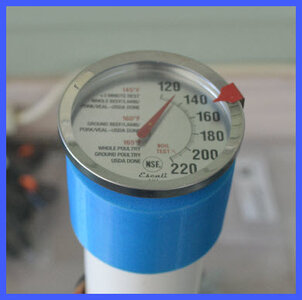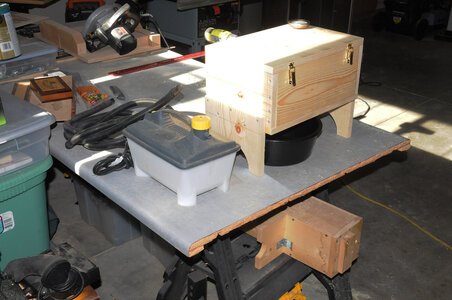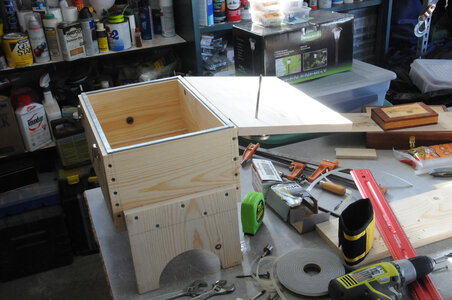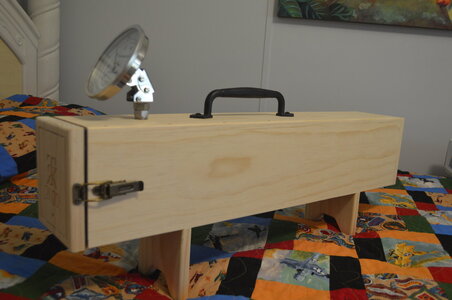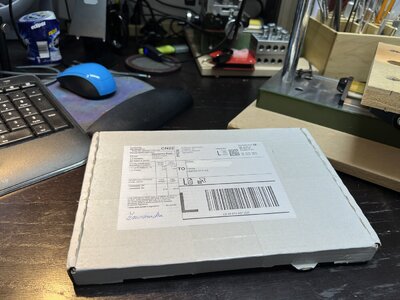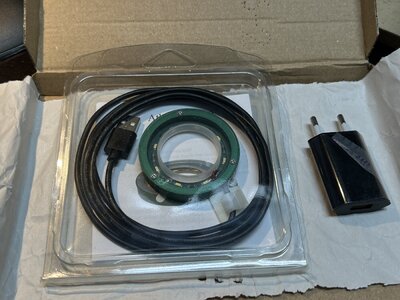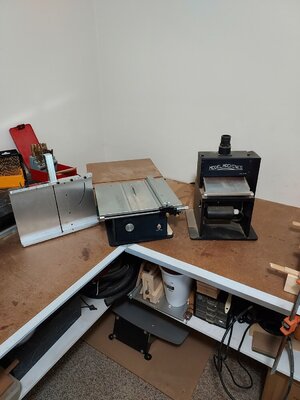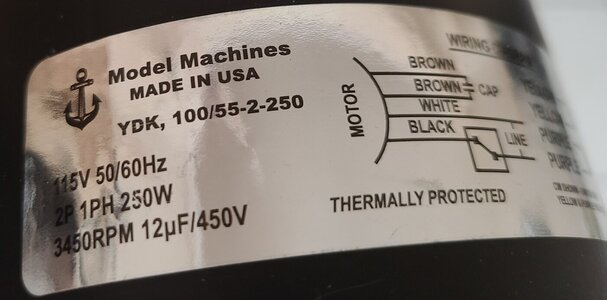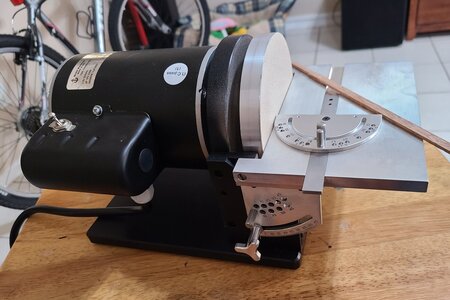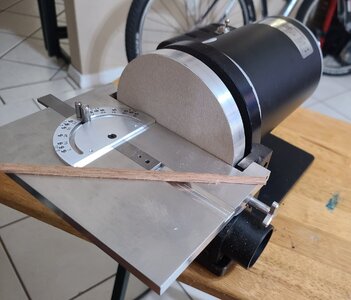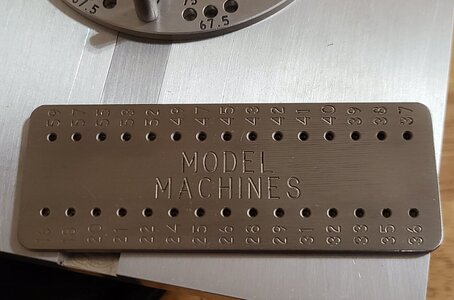After using the proxxon thicknesser for some years I have finally treated myself with a......
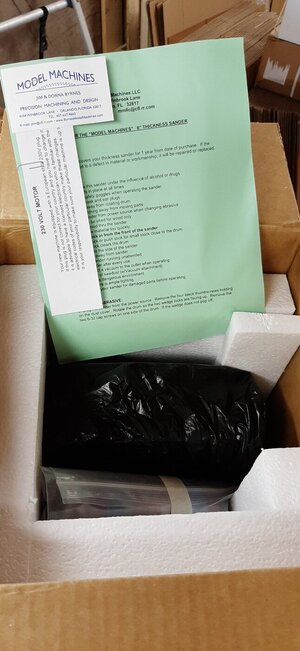
Tada yes my first byrnes machine a thickness sander.
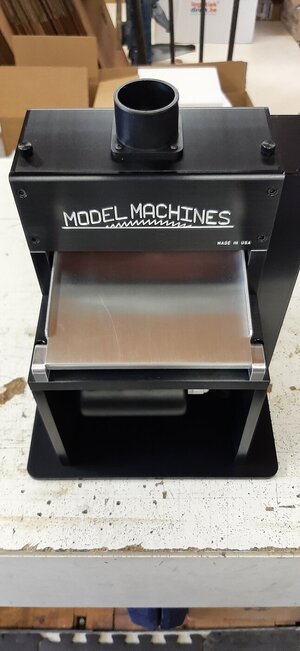
It has a nice large sanding surface and you can install two different courses of sanding paper at the same time, one left on the drum and one on the right side.
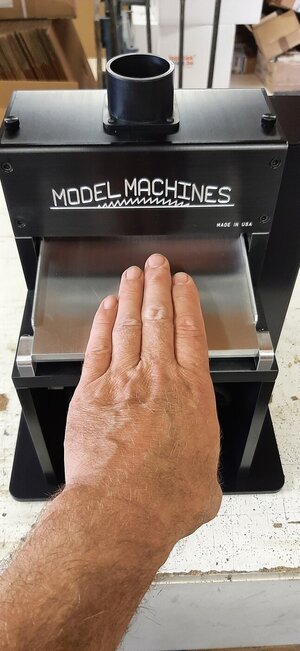
The use of the two is different in the way that the proxxon is a planer and the byrnes is a sander.
For thicker pieces upt too 1-2 mm the proxxon is perfect and fast, but for 1 mm and below the byrnes is much better. Planing thinner planks like deck planking the proxxon tends to chip instead of planing, then the byrnes which is sanding works better without the danger of losing planks due too chipping.
Both machines are solid and robust made out of aluminium.
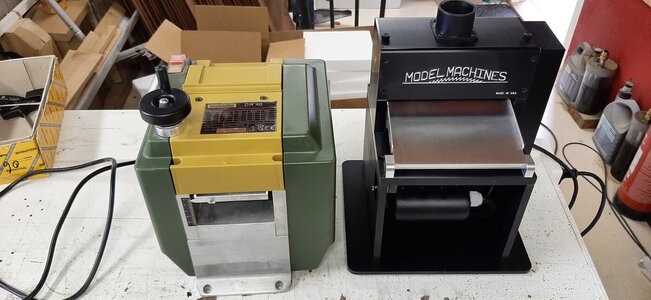
For Europeans the proxxon is cheaper as the shipping cost and added tax makes the byrnes much more expensive.
I think the two machines are perfect in working together and are not directly with each other in competition.
If you don t do your own lumber most probably tge byrnes machine is the best choice in combination with a good saw table.









